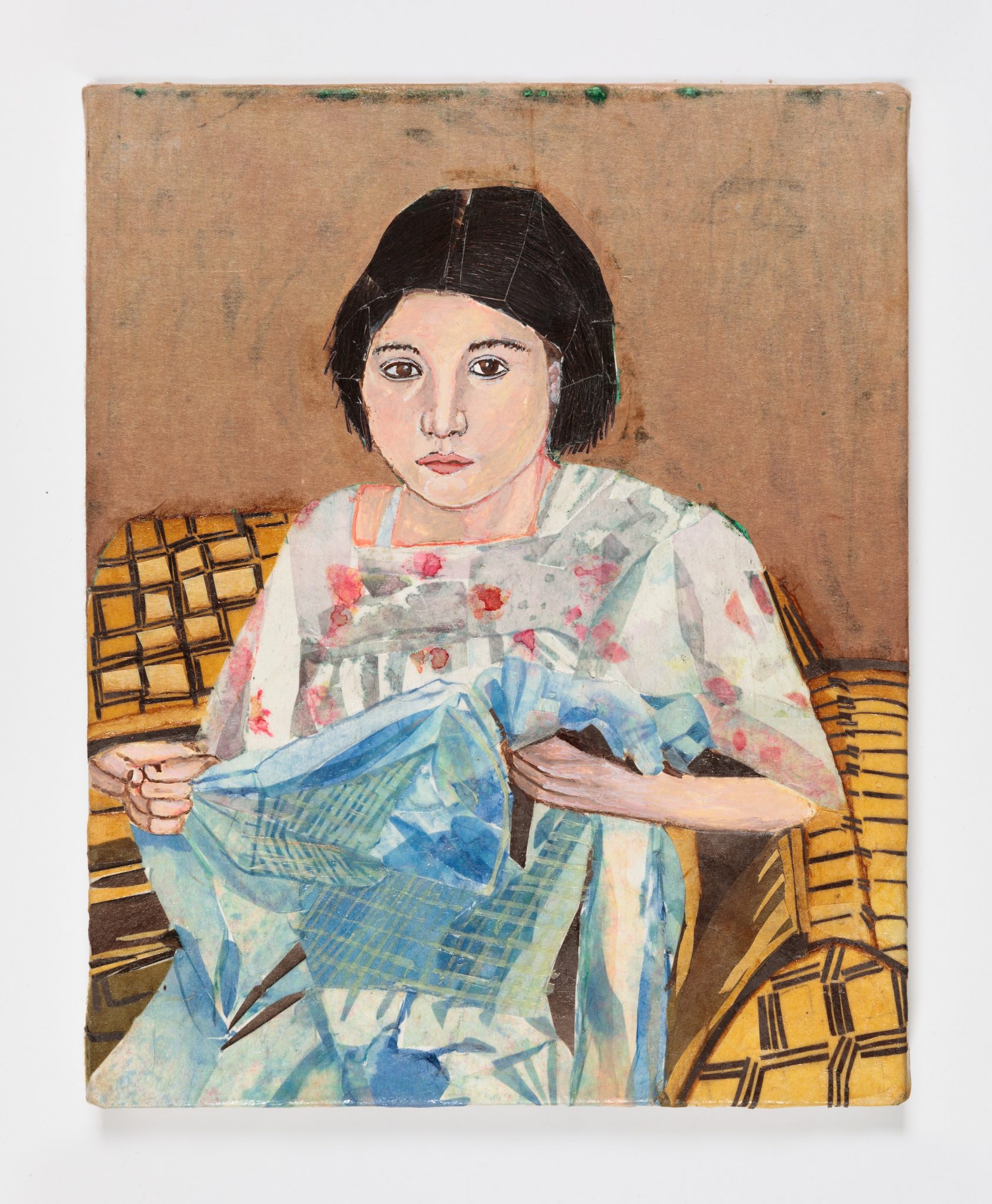They are embodied ideals of femininity. The ghostly pallor of their skin suggests an otherworldliness; they appear to be more spirit that flesh. These are the women I want to be: strong, vulnerable, compassionate, courageous, and in harmony with themselves and nature. They combine the elements of women who are typically thought of as powerful – the captains of industry, resolute politicians, fiery activists – with the traits of those who are not usually thought of as such, thereby underlining the common force found in all women. The female soldier fighting on the front lines is of interest, but so too is the mother who finds a way to feed her children and sing them to sleep amid bombing campaigns and in the ruins of cities. To truly ennoble womanhood, we must discover and appreciate the beauty in every action, big or small. – María Berrío
Colombian-born María Berrío meticulously constructs scenes of women that appear out of time and place using hundreds of pieces of Japanese paper, giving careful attention to the fabrics they wear, details within their locations, and symbolic elements of nature. “I started treating paper like paint,” says Berrío. “Sometimes it can be very expressive, sometimes it can be very contained – I felt like I could express my voice.” In all her work, female subjects stare out at the viewer with blank expressions, as if caught in the middle of an untold narrative or daily routine. La Costurera (The Seamstress) gives center stage to one of the most stunning elements within Berrío’s oeuvre – her genius in crafting complexly patterned clothing and fabric from paper. Berrío weaves small strips and larger patches of colored paper to form the folds of cloth in the seamstress’s hands and the loose floral fabric of her dress, all juxtaposed against the geometric yellow-brown upholstery. A native of Bogotá, Berrío traveled to the US to escape her country’s instability and remained to study art; she currently lives and works in Brooklyn. Her work is in permanent collections such as the Dallas Museum of Art; Crystal Bridges Museum of American Art, Bentonville; Philadelphia Museum of Art; and the Whitney Museum, New York.
